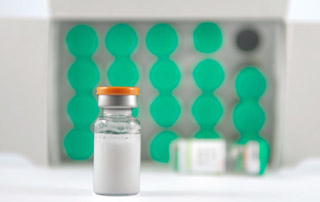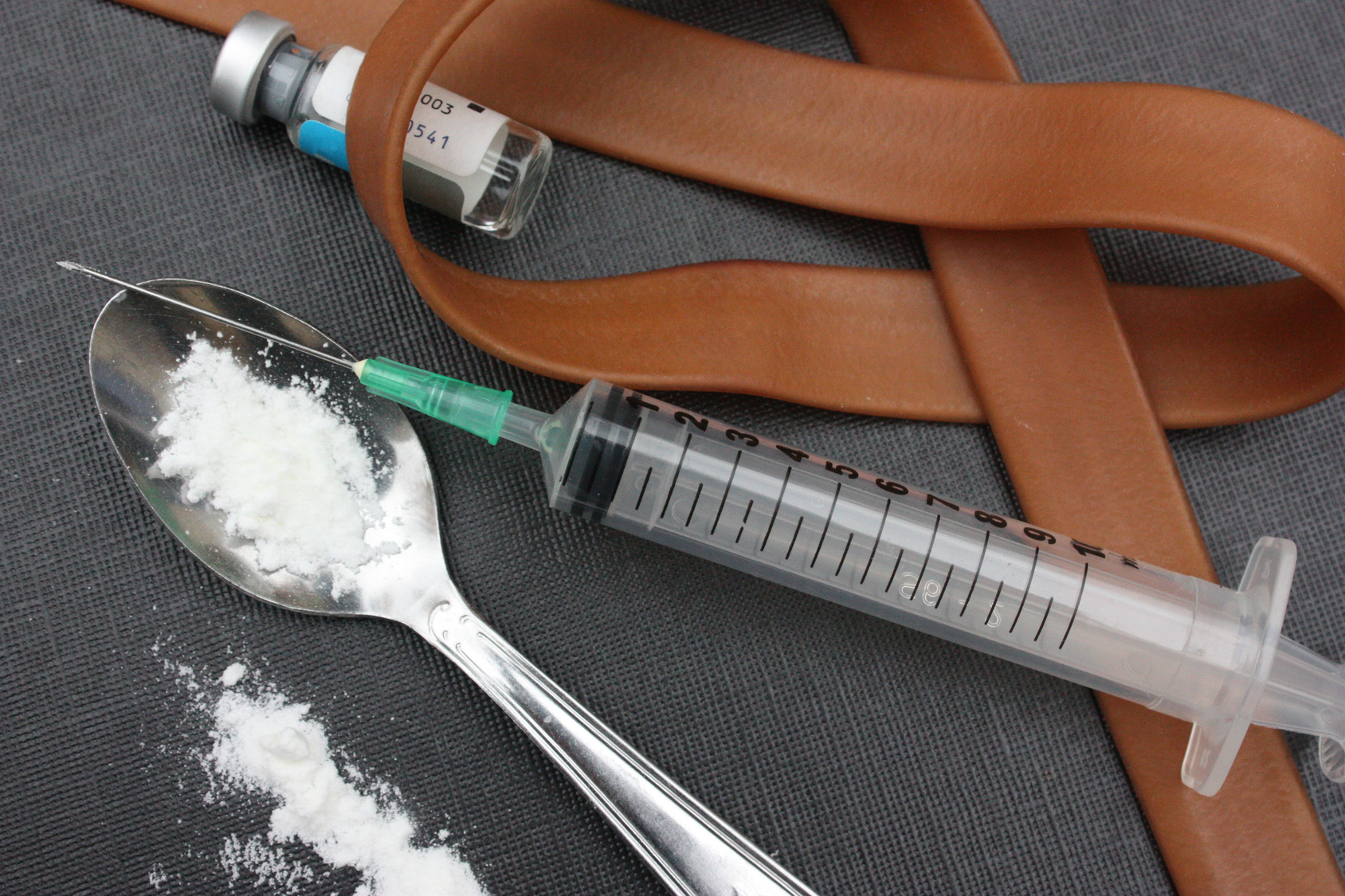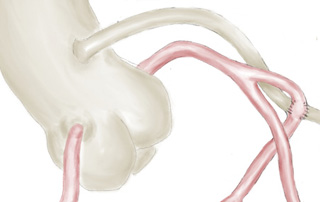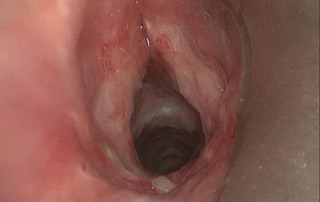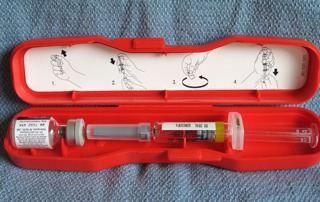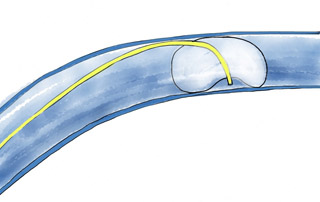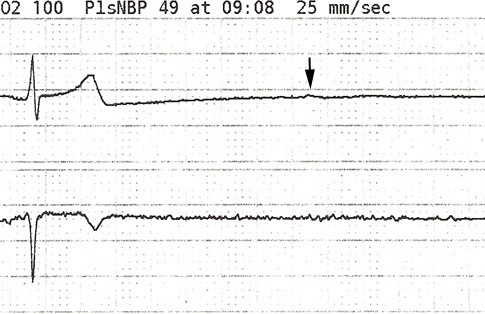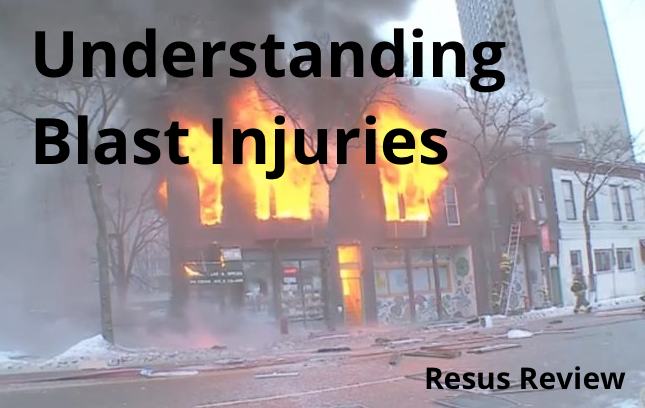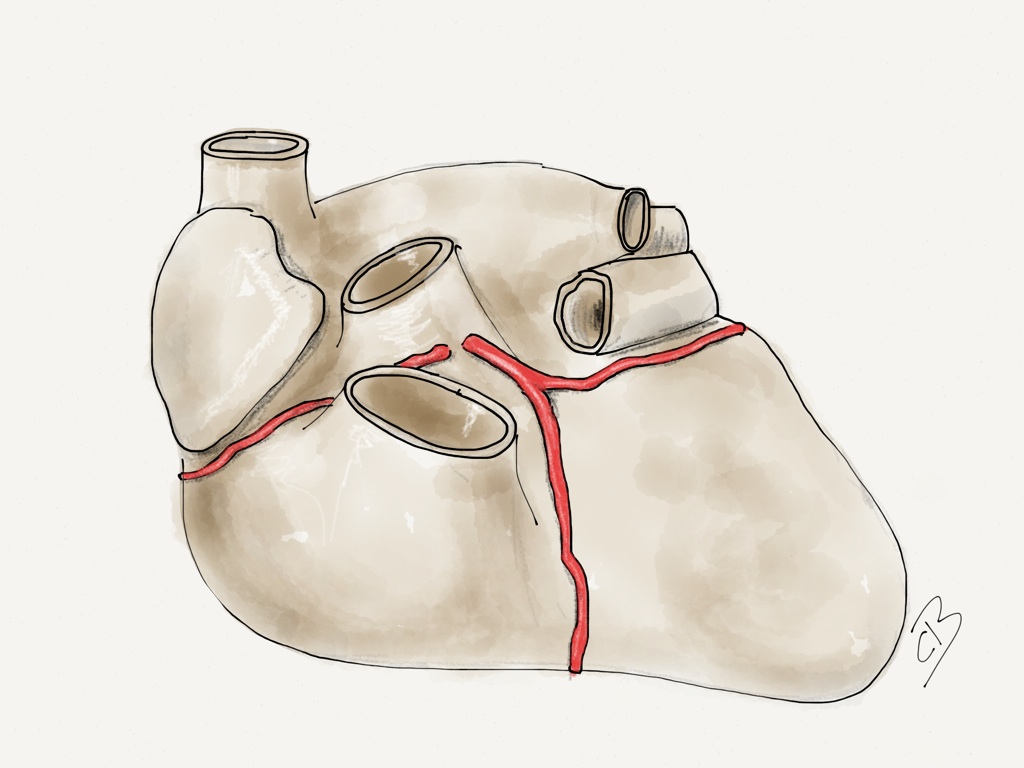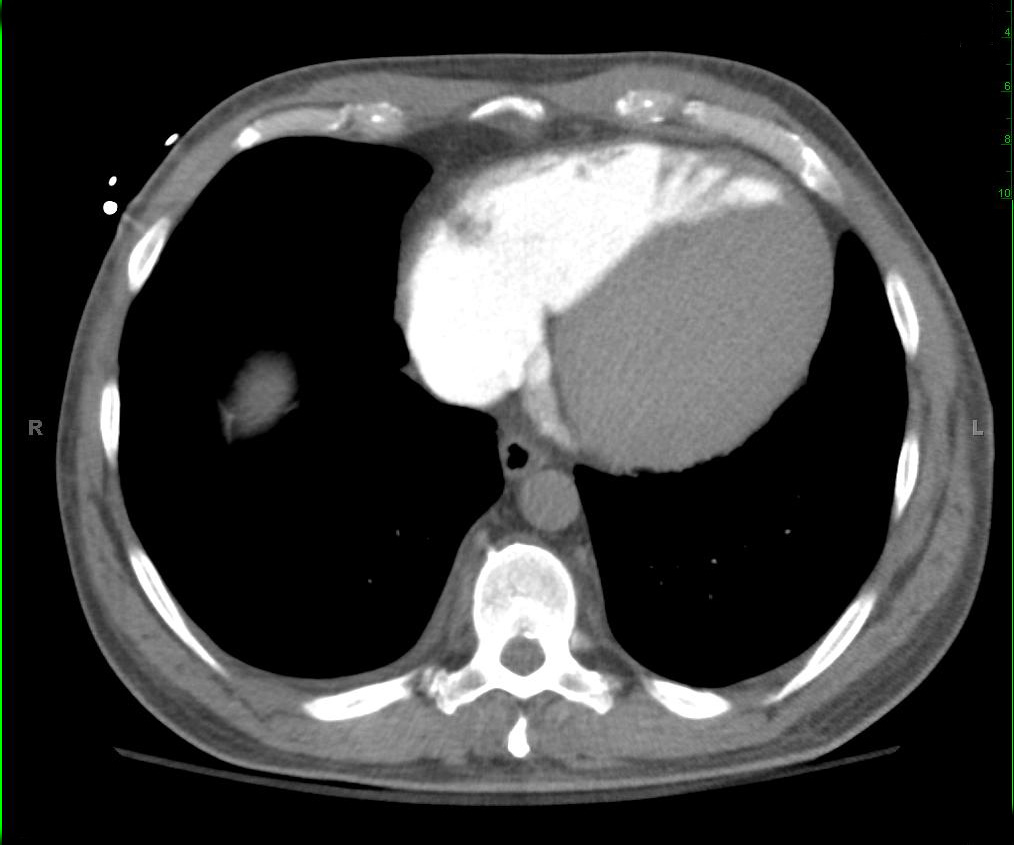There are congenital variations from the normal coronary artery anatomy that have significant clinical importance. There are many permutations of the origin site and course of the three primary coronary arteries (left anterior descending, left circumflex, and right coronary artery). The most clinical significant variations include: Single coronary artery originating either from the left or right sinus of Valsalva. Left main coronary artery or LAD originating from the right sinus of Valsalva.
Sometimes imaging can reveal remarkable physiology. A 40-year-old man presented with profound fatigue and abdominal pain that had begun the day before but substantially worsened over the last 12 hours. He reported not experiencing any chest pain, shortness of breath, nausea/vomiting. He was hypotensive, systolic blood pressure in 90s mmHg, and tachycardia at 105-110 bpm. He appeared premorbid on initial assessment. Electrocardiogram was bland with only non-specific ST-segment and T-wave chang
